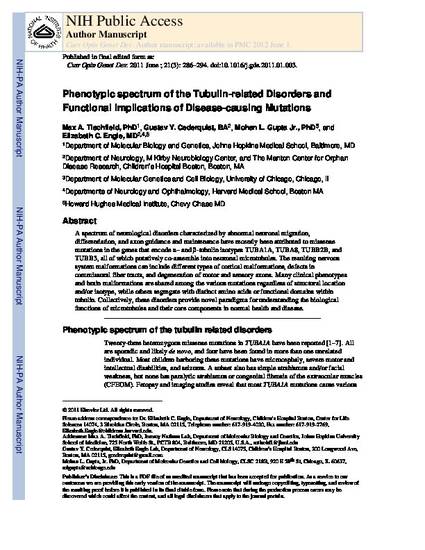
Article
Phenotypic spectrum of the Tubulin-related Disorders and Functional Implications of Disease-causing Mutations
Current Opinion in Genetics & Development
(2011)
Abstract
A spectrum of neurological disorders characterized by abnormal neuronal migration,
differentiation, and axon guidance and maintenance have recently been attributed to missense
mutations in the genes that encode α– and β-tubulin isotypes TUBA1A, TUBA8, TUBB2B, and
TUBB3, all of which putatively co-assemble into neuronal microtubules. The resulting nervous
system malformations can include different types of cortical malformations, defects in
commissural fiber tracts, and degeneration of motor and sensory axons. Many clinical phenotypes
and brain malformations are shared among the various mutations regardless of structural location
and/or isotype, while others segregate with distinct amino acids or functional domains within
tubulin. Collectively, these disorders provide novel paradigms for understanding the biological
functions of microtubules and their core components in normal health and disease.
Publication Date
June, 2011
DOI
10.1016/j.gde.2011.01.003
Publisher Statement
Copyright © 2011 Elsevier Ltd.
Citation Information
Max A. Tischfield, Gustav Y. Cederquist, Mohan L. Gupta and Elizabeth C. Engle. "Phenotypic spectrum of the Tubulin-related Disorders and Functional Implications of Disease-causing Mutations" Current Opinion in Genetics & Development Vol. 21 Iss. 3 (2011) p. 286 - 294 Available at: http://works.bepress.com/mohan-gupta/2/
